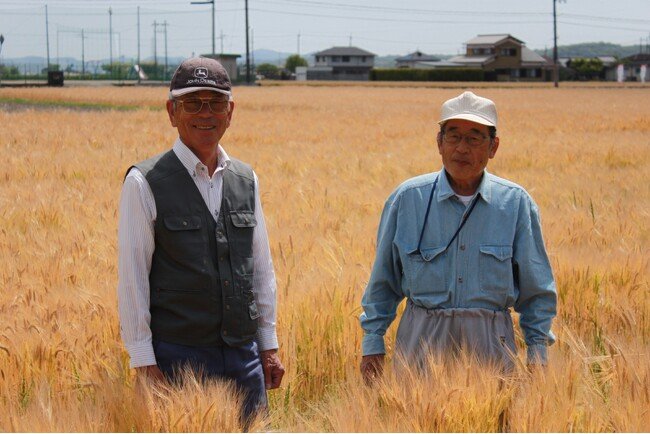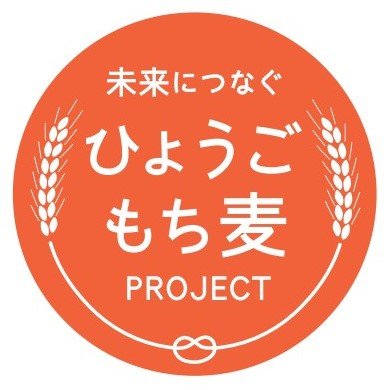Maruyanagi Kokuraya Co., Ltd.
All 4 products of Maruyanagi “Hyogo Grown Mochi Mugi” received Hyogo Prefecture certified food “Hyogo Anshin Brand” certification. Approximately 160 ha in Kita Harima, beginning in Kato City, Hyogo Prefecture, cultivated in collaboration with JA Minori “Kita Harima Mochi Wheat Kirarimochi”
……
Maruyanagi Kokuraya Co., Ltd. (Higashinada Ward, Kobe City:
Representative Director and President Yuji Yanagimoto), a manufacturer of steamed beans, boiled beans, and tsukudani (simmered in soybeans), will be cultivating the crops in collaboration with JA Minori (Kato City, Hyogo Prefecture: President and CEO Tomoshige Kanzawa). All four products (350g, 1kg, 2kg, 5kg) of “Hyogo-grown glutinous barley” (350g, 1kg, 2kg, 5kg) of “Hyogo-grown glutinous barley”, which uses “Kitaharima’s glutinous barley Kirarimochi”, are certified as Hyogo prefecture-certified food under the Hyogo Anshin brand. ” has been certified. In addition, we will gradually change the packaging of all four Mochi Mugi products, “Hyogo Grown Mochi Mugi,” to designs that are more familiar and easy to pick up, in an effort to expand consumer recognition.
[Image 1

“Kitaharima Mochi Mugi Kirarimochi” began to be cultivated in Kato City, Hyogo Prefecture in 2017, and is currently cultivated on approximately 160 ha, including Nishiwaki City and Taka Town. At Maruyanagi, we are working to promote agriculture, regional
revitalization, and local health through this sticky barley, and with this certification, we will work to further improve the quality of sticky barley, expand recognition, and increase demand.
What is Hyogo Prefecture certified food “Hyogo Anshin Brand”? [Image 2

“Hyogo Grown Mochi Mugi” uses only “Kirarimochi” glutinous wheat grown in Kato City and other parts of Kita Harima, and is polished and packaged at Maruyanagi’s own factory. By mixing the ingredients together when cooking rice, you can easily add dietary fiber to your sticky barley rice. Glutinous barley rice made from Kirarimochi grown in Kitaharima has less of the odor peculiar to barley and is easier to eat for first-timers than traditional barley rice, so we hope many people will try it at least once. We will gradually change the packaging to brighter and prettier colors and designs. (Switching sequentially as packages run out)
About “Kitaharima Mochi Mugi Kirarimochi”
[Image 4

The glutinous wheat used in “Hyogo Grown Mochi Mugi” is “Kirari Mochi” grown in Kita Harima, including Kato City, Hyogo Prefecture. In August 2023, this glutinous barley was added to the Hyogo Agricultural, Livestock, and Fishery Products Brand Strategy Items recognized by Hyogo Prefecture as “Kitaharima’s Kirarimochi,” and efforts are being made to improve the quality of glutinous barley and expand brand recognition. Masu. Kirarimochi is the name of a variety of sticky barley, which is characterized by its chewy texture and higher dietary fiber content than conventional sticky barley. Additionally, since it does not brown after cooking, it has a much improved appearance compared to conventional varieties, and has less of the odor characteristic of wheat, giving it an excellent taste. Initiatives through Mochi Mugi in Kato City
[Image 5

・About glutinous wheat cultivation in Kato City with JA Minori With the cooperation of JA Minori, which is based in Kato City, glutinous wheat cultivation began in the fall of 2017. In 2020, the cultivated area in Kato City increased to approximately 100 ha, and in 2021, the cultivated area will be expanded to Nishiwaki City and Taka Town. Currently, we are cultivating sticky barley on a total area of approximately 160ha. Originally, the land was mainly used to grow paddy rice, but there were some places where wheat was grown as a supplementary crop to rice. However, the disadvantage of growing white wheat as a second crop was that the harvest time and rice planting season overlapped, so cultivating glutinous barley, which was harvested two weeks earlier than white wheat, was a big advantage for producers, and the cultivation of sticky barley quickly spread. Ta. Another benefit for producers is that they can double-crop rice with wet rice, which increases their income.・Collaboration agreement concluded between Kato City and Maruyanagi (July 22, 2019)
[Image 6

Following the progress of glutinous barley cultivation in Kato City in collaboration with JA Minori, Maruyanagi has applied to Kato City for cooperation in making glutinous barley produced in Kato City a specialty product and promoting town development using glutinous barley. , Kato City also welcomed the move and decided to conclude a “cooperation agreement for regional revitalization, citizen health improvement, agricultural development, etc. based on the SDGs”. Furthermore, Kato City, JA Minori, Hyogo Prefecture Kitaharima Prefectural Bureau, Maruyanagi, and producers have launched the “Kato City Mochi Wheat Utilization Council” to promote mochi wheat cultivation, make it a specialty product, commercialize it, and support the health of citizens. We are enlivening the area in various ways.
“Hyogo Mochi Mugi Project” is an activity to spread Kirarimochi together with businesses in Hyogo Prefecture.
[Image 7

We want to convey the deliciousness and health value of glutinous barley grown in Kitaharima to as many people as possible. Businesses in the prefecture who share this idea have come together to create a local production for local consumption initiative that supports everyone’s health and future agriculture. The project “Hyogo Mochi Mugi Project” started in 2021. Various businesses participating in the project are developing products such as noodles, bread, and sweets that take advantage of the chewy texture and characteristics of glutinous barley, as well as developing menus for hotels and restaurants. By acquiring this certification, we hope to contribute to maintaining and improving everyone’s health, revitalizing the region, and developing agriculture through mochi barley by working with the local community and businesses in Hyogo Prefecture to further expand brand recognition and demand. thinking about.
About Maruyanagi Kokuraya Co., Ltd.
With the main theme of “passing on the wonders of traditional ingredients to the next generation,” we are developing new foods that take advantage of the health value and deliciousness of traditional ingredients such as kelp, beans, grains such as glutinous barley, and vegetables that we have been handling for many years. I would like to work on the proposal and pass it on to the next generation.
[Image 8

[Company profile] Company name: Maruyanagi Kokuraya Co., Ltd. Head office location: 4-9-21 Mikagezuka-cho, Higashinada-ku, Kobe City Representative Director and President: Yuji Yanagimoto Business details: Manufacture and sales of steamed beans, tsukudani, and boiled beans Founded: December 1951 Monday 26th HP:
https://www.maruyanagi.co.jp/
